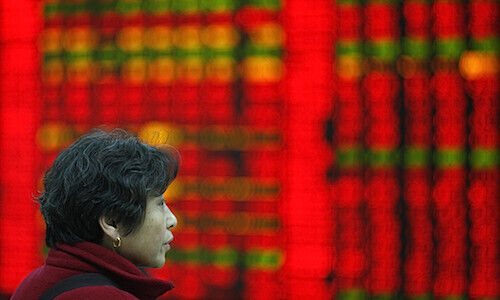Piling Concerns Brutalize Chinese Equities
Chinese stocks are posting their worst losses since 2008 with a myriad of headwinds in play including U.S. delisting fears, a new surge in Covid cases, sanction risks and more.
Already beaten down by an ongoing domestic crackdown on the tech sector – including the latest possible record high money-laundering fine against Tencent – Chinese stocks are undergoing an even steeper decline as of late.
The first of the new rounds of sell-offs was triggered by an announcement issued by the U.S. Securities and Exchange Commission last Thursday warning of the potential delisting of five companies – BeiGene, Yum China, Zai Lab, ACM Research, and HUTCHMED – if they fail to comply with auditing requirements under the Holding Foreign Companies Accountable Act enacted in 2020.
The Nasdaq Golden Dragon Index – a benchmark that tracks Chinese companies trading on U.S. exchanges – fell 10 percent, marking its worst drop in a single day since the 2008 global financial crisis.
«Uninvestable»
This week, Chinese equities posted more one-day record lows after a J.P. Morgan research note issued on Monday downgraded 28 internet firms to underweight, including Alibaba, Tencent Holdings and Meituan, calling them «uninvestable» over the next six to 12 months.
«Due to rising geopolitical and macro risks, we believe a large number of global investors are in the process of reducing exposure to the China internet sector, leading to significant fund outflows,» J.P. Morgan analysts said in the note, adding that the sector-wide sell-off could continue without valuation support.
«The tech sector will continue to suffer from regulation challenges plus the risk of U.S. delisting and penalization of growth stocks as rates continue to normalize,» added Cesar Perez Ruiz, chief investment officer of Pictet Wealth Management which is underweight Chinese equities and prefers developed over emerging market stocks.
Covid Resurgence
Furthering its challenges, China is experiencing its worst Covid outbreaks since Wuhan in various major cities with lockdowns and restrictions imposed in Shenzhen and Shanghai.
Combined with its insistence to maintain the zero-Covid policy, this could derail its growth target of 5.5 percent this year, an objective higher than analysts expected which was announced last week at the annual session of the National People’s Congress.
«China is experiencing the largest wave of COVID since the end of national lockdown in March 2020,» according to a note authored by ANZ Research’s Raymond Yeung and Zhaopeng Xing. «If the lockdown is extended, China’s economic growth will be significantly affected. It is too early for us to change our GDP growth forecast (5.0 percent) for 2022 but we are wary of the impact of a partial lockdown in the economically rich provinces.»
«The sharp pick-up in Covid cases has put major cities such as Shanghai and Shenzhen into lockdown – with no suggestion that Chinese authorities are prepared to back away from their zero-tolerance stance to Covid,» according to an analyst note by ING.
Sanction Risks
In addition to ongoing property troubles and a new nickel crisis, China also faces the threat of Western sanctions.
Although it has publicly stated that it has no intentions to challenge the sanctions and its larger banks are avoiding such risks, there are concerns that Russia has reportedly asked China for military assistance, though the two countries deny the claims. If true, this could add further pressure to Chinese markets, including the technology sector which is increasingly involved in the defense industry.
«They have their own self-interest to not supply [advanced technology] to Russia,» said U.S. secretary of commerce Gina Raimondo in a recent «New York Times» interview, adding that Washington could «essentially shut down» China’s largest chip maker Semiconductor Manufacturing International Corporation (SMIC).
«So they’re not doing it out of the goodness of their heart. It would be devastating to China’s ability to produce these chips.»
Policy Support
Despite the risks, some remain optimistic that a rebound is within sight.
UBS, for example, is positive on Chinese equities due to policy support such as monetary easing and is forecasting the economy to trough in the first quarter before recovering throughout the rest of 2022, resulting in solid earnings growth and 5 percent annual GDP growth.
Coupled with lower valuations, UBS upgraded offshore Chinese equities to its most preferred market in Asia with expectations of high-teen returns for MSCI China this year.
























